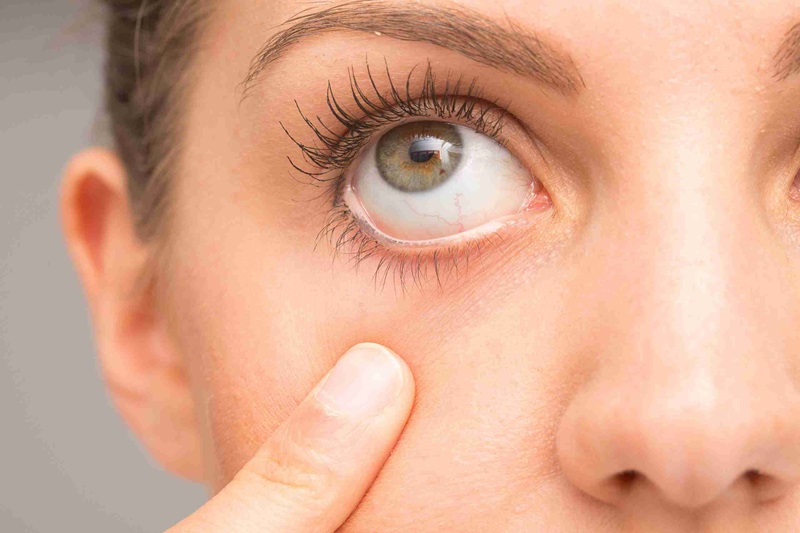Exploring the Connection Between Digital Devices and Dry Eyes

Ever found yourself rubbing your tired, sore eyes after a long day of work on your computer? Or perhaps you’ve noticed your eyes start to feel irritated while you’re endlessly scrolling social media on your smartphone late at night? If you’ve experienced either of these scenarios, you’re not alone. In the modern world, where screens are an integral part of our work and personal lives, digital eye strain is a growing issue affecting millions across the globe. Given the development, it be hooves us to delve deeper into the connection between the use of digital devices and the onset of dry eyes.
In our day-to-day lives, it’s hard to escape digital devices, and their impact on our eyes may be much more significant than we initially thought. More so, it seems to have long term effects too. But how exactly do these devices contribute to dry eyes, and what measures can we take to mitigate their effects? This blog post aims to shed light on these questions and provide you with the knowledge to protect your eyes in the digital age.
In the forthcoming segments, we’re going to take a closer look at what causes dry eyes, discuss the role of digital devices in the exacerbation of eye strain, and, importantly, share tips for reducing this discomfort. It’s high time we start implementing strategies to combat the strain that our beloved but detrimental digital devices are causing.
Understanding Dry Eyes
Dry eyes are among the most common eye conditions worldwide. It’s a condition characterized by the underproduction of tears or production of low-quality tears, leading to insufficient lubrication and hydration of the eyes. This can result in discomfort ranging from slight eye irritation to significant inflammation and even, in some cases, vision damage.
There’s an array of reasons one could suffer from dry eyes, including certain medical conditions, aging, environmental factors such as wind and dry air, and extended use of contact lenses or eye surgeries. However, one prevalent cause that’s gaining increasing attention lately is the constant use of digital devices, such as computers, tablets, and smartphones.
Indeed, our digital devices, which have become indispensable tools in contemporary lifestyles, may be a cause of concerns when it comes to our eye health. Research suggests a correlation between heavy screen time and dry eyes, marking a crucial area for further exploration and public health concern.
Digital Devices and Eyes: The Connection
So how do digital devices contribute to dry eyes? The answer lies in a behavioral pattern known as the ‘computer vision syndrome.’ When we’re engaged with a digital screen, our blink rates decrease significantly—sometimes by up to 50%—resulting in excessive tear evaporation and consequently, dry eyes.
Furthermore, poor lighting, screen glare, improper viewing distances, continual focus shift, and prolonged exposure to blue light emitted by these devices compound the issue, causing not just dry eyes but also blurred vision, headaches, and neck and shoulder pain.
While unavoidable for many, it’s essential to understand that the consistent use of digital devices requires corrective action to prevent long-term damage to our eyesight.

The Impact of Blue Light
The blue light emitted from our digital devices is particularly concerning. Extended exposure to blue light can cause permanent eye damage. High-energy blue light penetrates deep into the eye, which can lead to the damage of light-sensitive cells in the retina and accelerate age-related macular degeneration (a leading cause of blindness).
Additionally, over-reliance on digital devices and exposure to blue light can disrupt our circadian rhythms, affect sleep quality and even mental health. Addressing blue light exposure, especially from digital devices, is critical in preventing dry eyes and safeguarding eye health in general.
Mitigating Measures
While completely eliminating digital devices from our lives might be unthinkable for many, practicing effective preventive measures can significantly reduce the impact of digital devices on our eyes.
Simple habits like maintaining an appropriate distance from the device, fitting your workspace with proper lighting, remembering to blink often and taking regular screen breaks can go a long way. Adjusting screen brightness and contrast, and investing in blue light-reducing screen protectors or glasses can also be extremely beneficial.
More so, maintaining a balanced diet rich in Omega-3 fatty acids and hydration can support eye health. Regular eye exams can also help identify and address issues promptly.
The Role of Interior Design
Our home and workspace environment also play a crucial role in mitigating screen-related eye strain. An ergonomically designed workspace that prioritizes natural light, a neutral color palette to reduce eye strain and adequate distance from screens can significantly reduce the risk of digital eye strain.
In the same vein, creating a visually soothing and calming environment can also help to not only rest your eyes but also improve general well-being. Hence, when designing and organizing your workspace, it’s essential to consider such factors thoroughly.
Conclusion
In our digital age, the prevalence of digital eye strain and dry eyes is increasing alarmingly. The connection between digital devices and dry eyes, though often disregarded, is a public health concern that requires due attention. In fact, it serves as a crucial reminder of the unintended side effects of our ever-increasing dependence on technology.
However, by understanding the cause-effect relationship, and taking proactive steps such as regular screen breaks, use of blue light filters, maintaining a healthy diet, regular check-ups, and creating a eye-friendly environment, we can certainly strive to minimize the strain on our eyes due to digital devices.
In the end, it’s about achieving balance – managing our reliance on digital technology while not compromising our eye health. After all, it’s through our eyes that we perceive and interact with the world around us, making them one of our most valuable assets worth protecting.









